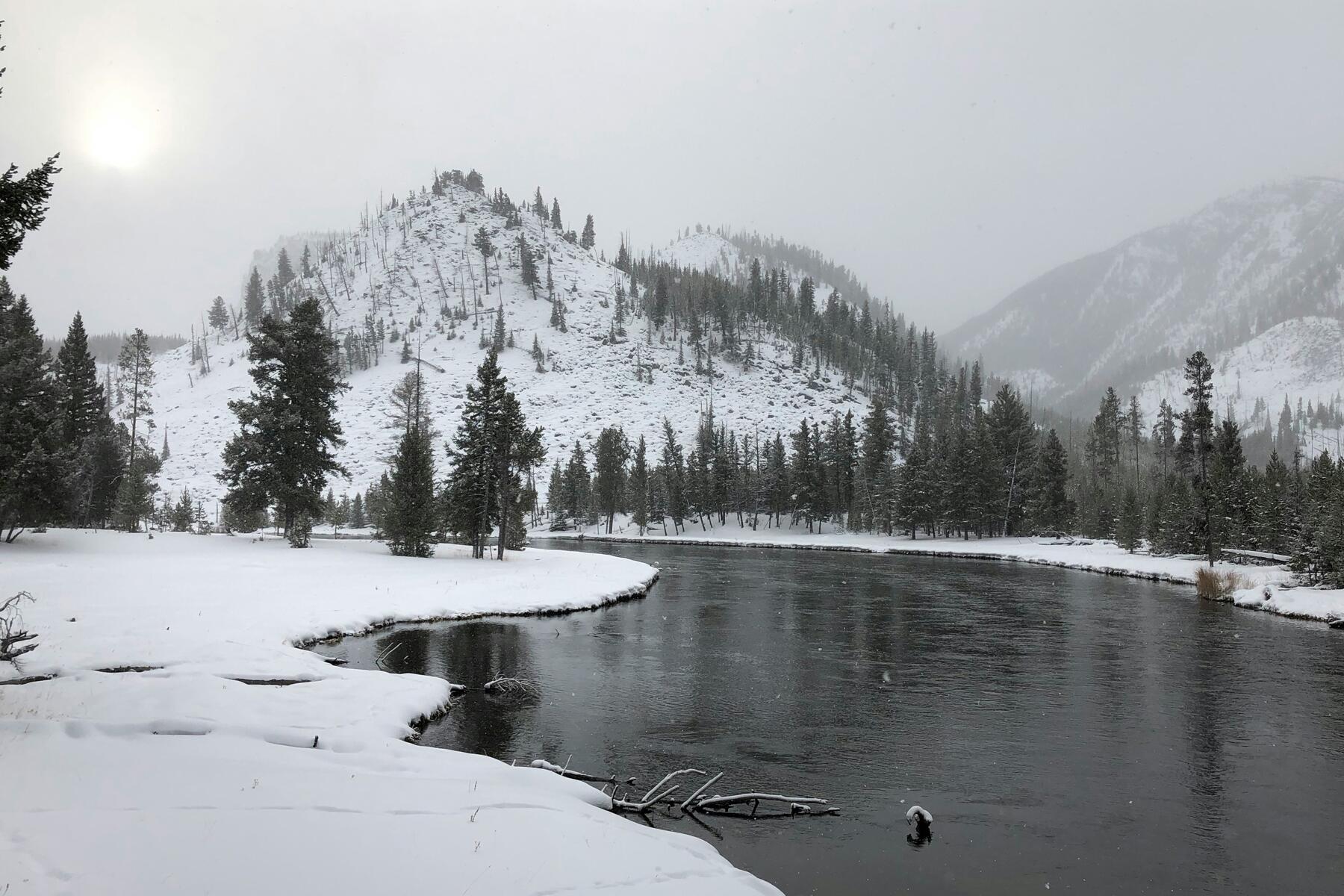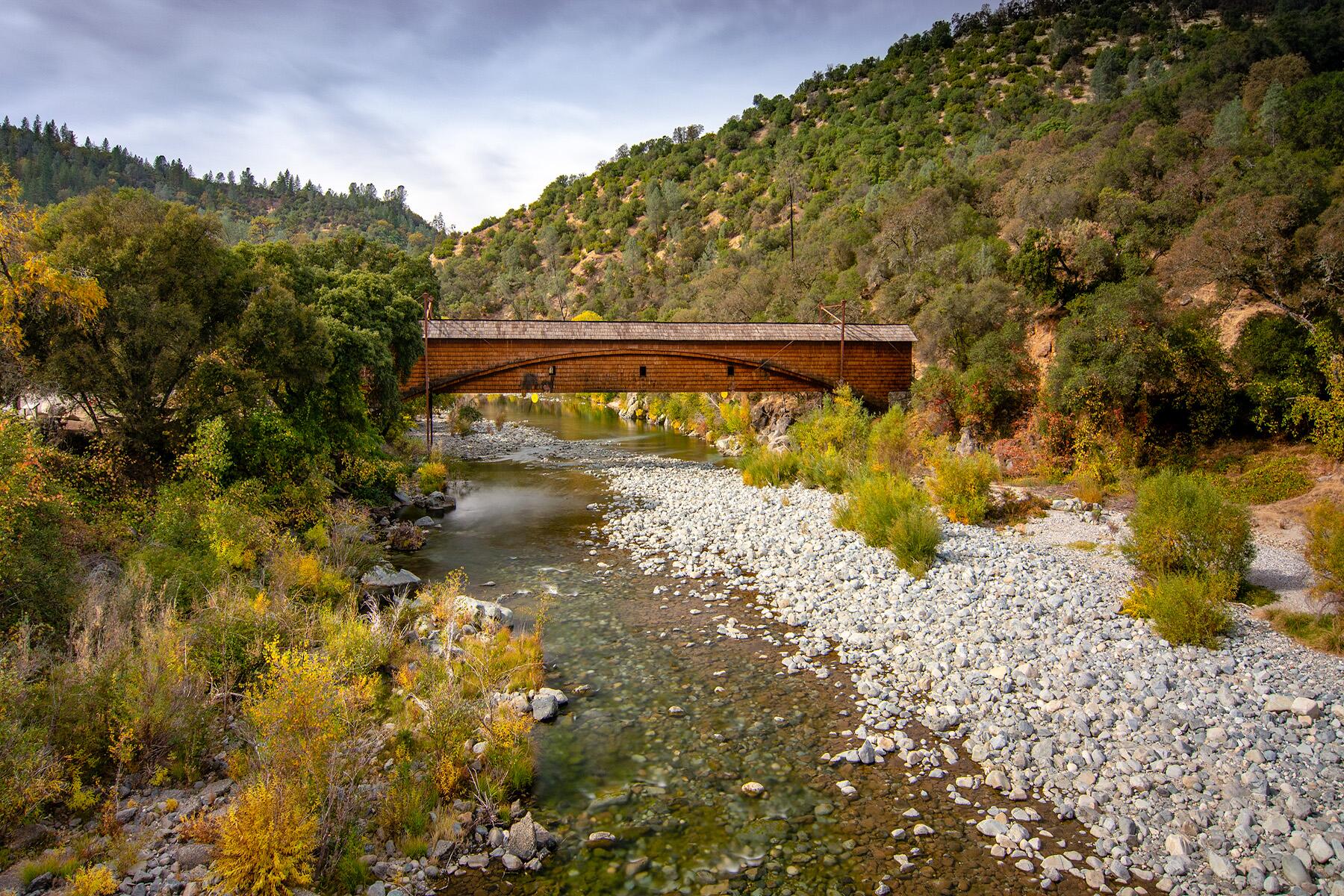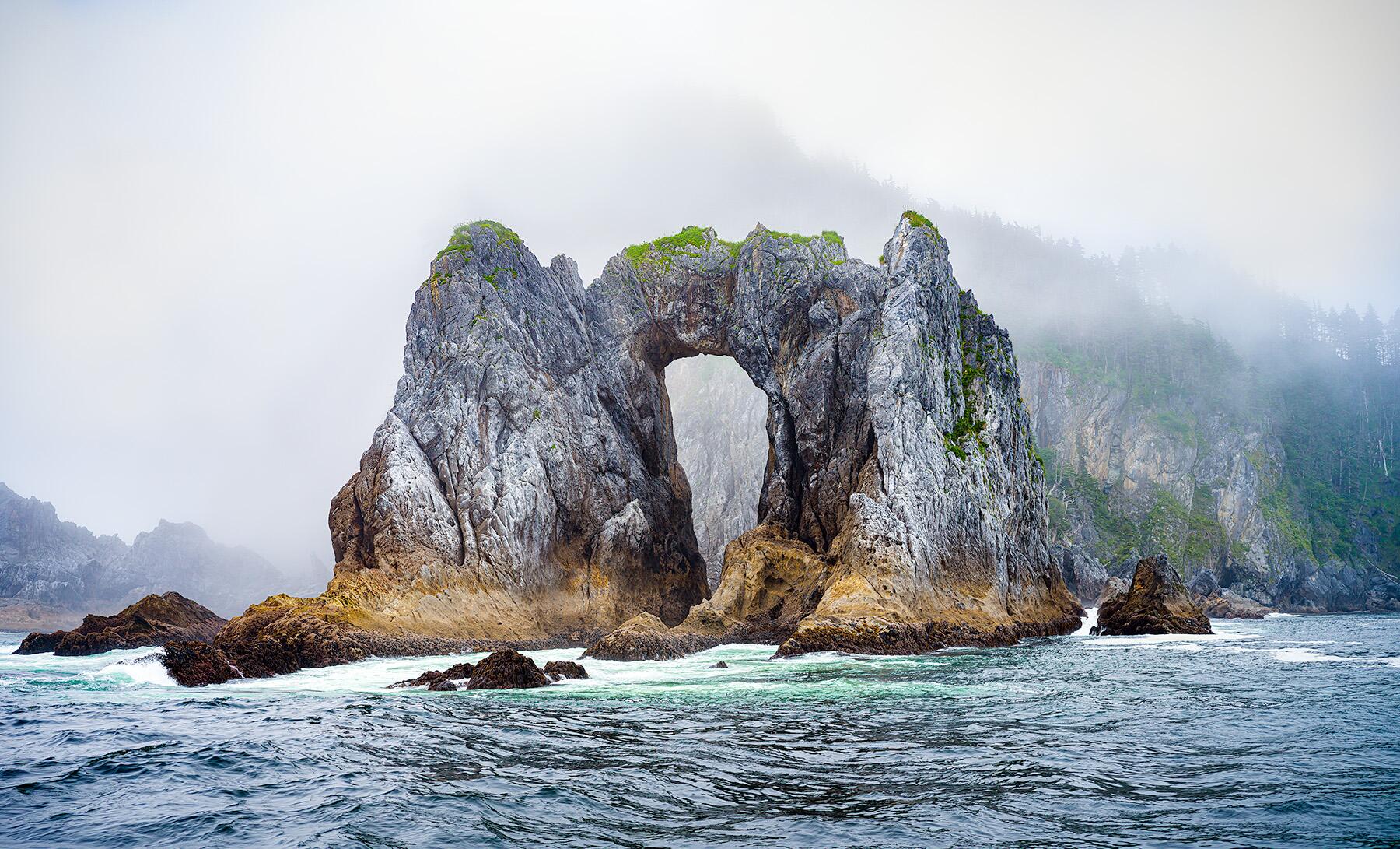Journey with us as we visit some superlative U.S. National Park Service sites.
The U.S. national parks come in all shapes and sizes, from Alaskan parks whose enormity defies comprehension to petite historical parks along the East Coast, with plenty in between. Though it’s not only size where we see interesting extremities—there are other dynamic elements that push the limits of comfort, endurance, and astonishing, surreal variations of beauty, like temperature, weather, remoteness, most trails, most frigid cold, most swelteringly hot, most bone dry…
Smallest
WHERE: Thaddeus Kosciuszko National Memorial (Philadelphia, Pennsylvania)
The National Park Service measures all parks in acres, but it is probably best to measure the Thaddeus Kosciuszko National Memorial in Philadelphia in square feet. It is the smallest NPS unit, coming in at .02 acres, or 871 square feet. However, you’d be wrong to skip over this park, which preserves the boarding house Kosciuszko, (the dashing Polish hero and military engineer of the Revolutionary War, and of named NYC-bridge fame), rented when he returned to America in the late 1700s. A replica of his room is kept period-style with artifacts like his glasses and uniform, giving the room a feeling of “living history.” A museum on the ground floor recaps how he became swept up in the American pursuit of liberty, his heroism at West Point and Saratoga, and the outcome of his efforts to bring liberty to his Polish homeland.
INSIDER TIPThe memorial has very limited and seasonal hours, currently April through October, Saturday – Sunday only, from 12:00 p.m. to 4:00 p.m. Confirm visiting hours via the NPS website before setting out.
Largest
WHERE: Wrangell-St. Elias National Park (Alaska)
Alaska is the largest U.S. state, occupying one-fifth of the amount of territory in the entire lower 48—so it stands to reason that the state is home to the largest national park, Wrangell-St. Elias, which dominates at 13,175,799 acres—you could fit over 650 million Kosciuszko National Memorials there. This park only stops because Canada is in the way. Simply put, Wrangell-St. Elias is massive, replete with glaciers, grizzlies, mountains, and abandoned ghost town mines! The best options for visiting are driving a half-day from Fairbanks or Anchorage to the town of Chitina. From there, take the McCarthy Road (a two-hour drive) to the towns of McCarthy and Kennecott, where you can stay and enjoy many of the nice park lodges. From McCarthy, full and half-day trips into the park can be arranged, with hiking, bicycling, flight-seeing, or for the more adventurous, ice climbing trips.
INSIDER TIPDriving on the McCarthy Road, along with other unimproved roads in Alaska, isn’t allowed with many of the national rental car companies. Boutique and local Alaska car rental companies are willing to work with you and will rent cars that can be driven on these gravel roads without violating your rental contract.
Recommended Fodor’s Video
Oldest
WHERE: Yellowstone National Park (Wyoming, along with Idaho and Montana)
Yellowstone National Park was the first national park in the entire world when President Ulysses S. Grant designated it in 1872. Remember him from the Civil War? Yep, that’s how old this park is. Yellowstone National Park is considered one of the original and greatest natural conservation efforts, as its preservation as public land saved the area from becoming blighted with tourist attractions. It also prevented the destruction of many unique thermal features, which was of concern just as much in the 19th century as it is in present day.
INSIDER TIPThe entry fee to Yellowstone is currently $35 for a 7-day pass, for a bit more than 1/2 that price, you can buy the NPS’s America the Beautiful pass which grants unlimited one year access to all NPS fee-based parks at a current rate of $80, as of publication.)
Newest
WHERE: Indiana Dunes National Park (Porter, Indiana)
The National Park Service is always adding new units, the list of places in need of federal protection ever-expanding. As of publication, there are 419 units in the NPS, while 10 years ago there were only 390 units, and 20 years ago 377. Indiana Dunes National Park is the newest of the major national parks which day trips been part of the NPS as a protected lakeshore since 1966. In 2019 it was elevated to the status of national park—a title it shares with only 60 other amazing places. With miles upon miles of beaches, trails, campsites, and forests, this park offers many recreation options—hiking the half-day dune trails and catching breathtaking glimpses of Lake Michigan are highlights for any visit.
Most Accessible
WHERE: Cuyahoga Valley National Park (Ohio)
When people think of national parks, Ohio probably isn’t the first state that comes to mind. It should though, as more than 101 million Americans live within 400 miles of Cuyahoga—only Shenandoah National Park comes close to that number. Cuyahoga Valley National Park, in the eastern part of the Buckeye State, near the southern suburbs of Cleveland, was established in 2000 and preserves both aged forests and historic farmland throughout 50 square miles. Visit the photogenic-in-all-seasons Brandywine Falls, a 65-foot waterfall, and hike, bicycle, fish, kayak, and golf to make the most of the park. A real treat is the scenic railroad, which takes you through the park on beautiful, relaxing rail routes and also becomes the themed Polar Express in the winter! Did we mention that this park is also a great winter destination? It is. Cross country skiing, winter photography, and night sky viewing (meteor showers and aurora borealis!) are exceptional here.
Most Remote
WHERE: The War In The Pacific National Historical Park (Guam)
If coming from the continental United States, you’ll have to travel into the future to visit this park. The War In The Pacific National Historical Park, Guam, is on the other side of the international date line, over 5,000 miles from the West Coast and 3,000 miles from Alaska. The park preserves and interprets the Pacific Theater in World War II. Like many of the NPS history parks, it also offers ample recreational activities, like hiking, history trails, snorkeling, and picnicking, as well as sensitive preservation of the natural ecosystems in the region.
Coldest
WHERE: Denali National Park (Alaska)
Brrr…When we think of Alaska, many of us tend to think of cold weather first. At Denali National Park, this impression is spot on during the winter months, when the average low temperature is well into negative numbers, sometimes dipping to -40 degrees Fahrenheit. Most of these extreme temps happen directly on the namesake mountain itself, the tallest mountain in all of North America. Sounds like you’re going to need a warmer sleeping bag.
Hottest
WHERE: Death Valley National Park (California and Nevada)
Denali may have you shivering, but Death Valley will have you sweating. Seriously, be prepared with plenty of water when visiting, and hiking. The world’s hottest recorded temperature the at Death Valley, 134°F back in 1913. In the summer, average daily temps at Furnace Creek, the main visitor center and tourist stop in the park, have topped 115°F. The park even has an oft-Instagrammed visitor center sign with a digital thermometer, letting you know exactly how toasty your visit will be.
Most Visitor Centers
WHERE: Yellowstone National Park (Wyoming, along with Idaho and Montana)
Do you like to talk to park rangers? Look at museum displays and exhibitions? Browse in gift shops? Use a restroom that is not, ah, rustic? Then you’ll love that Yellowstone National Park features ten visitor centers, that number inclusive of one museum and two information stations. Each visitors’ center is located in a different part of the park, and it’s well worth stopping by each, as Yellowstone has a great variety of landscape, from open plains to geyser basins, roaring rivers to serene lakes, all with different recreation activities near each visitor center, from a hike to see Old Faithful erupt to a tranquil sunset along Yellowstone Lake. The rangers are super helpful and can really make your visit special by offering tips to safely enjoy the park in all seasons.
Least Visitor Centers
WHERE: Cape Krusenstern National Monument, Kobuk Valley National Park, and Noatak National Preserve (Alaska)
Even the national parks are getting into the co-working craze! These three remote Alaska parks actually share a station, the Northwest Arctic Heritage Center in Kotzebue, Alaska. There you’ll be able to find information about these unique places (do note the actual parks are remote and miles and miles away from the Heritage Center.) The parks themselves protect nearly 9 million acres of Alaskan wilderness, from Arctic beaches and shores, wild rivers, massive inland sand dunes, and hundreds of thousands of caribou.
Most Visited
WHERE: Golden Gate National Recreation Area (San Francisco, CA)
By official 2018 counts, the most recent placeholder here (and trending more so every year) is Golden Gate National Recreation Area, in San Francisco. This unit saw more than 15 million visitors in 2018. The recreation area features more than views of its namesake bridge; it comprises over 80,000 acres of protected land, including Alcatraz Island, Kirby Cove, many historic forts, and Muir Beach. You could, in fact, likely spend an entire week at Golden Gate and still have places left to explore.
Least Visited
WHERE: Aniakchak National Monument and Preserve (Alaska)
Also one of the most remote parks, Aniakchak is home to a unique volcanic caldera and its namesake, an official wild river. It’s listed here because it necessitates taking a floatplane from the town of King Salmon, which is in itself a flight from Anchorage. In many cases you would travel as part of a group multi-day hiking or rafting adventure, or as a day trip, perhaps while on a quest to complete visits to all the NPS units. Visitation is under 200 people per year.
Wettest
WHERE: Mount Rainier National Park (Washington state)
“Let it snow, let it snow, let it snow” should be the theme for this national park. Mount Rainier is one of the wettest places in all of America, with average yearly snowfall in the southern Paradise region of the park (as of 2016) upwards of 53 feet. Not inches, feet. Even when it’s not getting a healthy dusting, average yearly rainfall tops nine feet and precipitation occurs, on average,180 days out of the year. One major outdoor company even names its premier weatherproof jacket after this park. You’re probably going to get wet if you visit, but don’t let that stop you. Mount Rainier National Park has some of the best hiking trails you can find in the Pacific Northwest, just don’t forget your rain gear.
Least Snowfall
WHERE: Dry Tortugas National Park (Florida)
There are a few parks that see very little snowfall, so we’re picking one of our favorite national parks, Dry Tortugas, which has received, in its time as a national park, a grand total of 0 inches of snow. In fact, the word “Dry” in its name refers to the fact that there are no natural freshwater sources on this island and ocean park, the furthest of the Florida Keys. The main dryland feature (99% of the park is protected ocean) is Fort Jefferson, a Civil War-era fort of epic proportions. Day trips are the most popular way to explore this park, along with overnight beachfront camping.
INSIDER TIPYou’ll need to reserve your spot for camping gear on the commercial ferry eight to twelve months in advance, as they only have space to take ten campers’ gear each day.
Longest Scenic Drive
WHERE: Blue Ridge Parkway (Virginia and North Carolina)
The longest scenic drive in our national parks would be a roadway that happens to be an NPS unit unto itself. The Blue Ridge Parkway is a 469-mile scenic drive that takes you between Shenandoah and Great Smoky Mountains National Parks, and its entirety is a standalone NPS unit. Travel slow here, take in the scenery at a leisurely pace and you’ll be rewarded with dramatic mountain tableaus, valley vistas, quaint small towns, fall foliage and a curvy, winding road that seems to stretch into forever.
Shortest Scenic Drive
WHERE: Cadillac Mountain Road, Acadia National Park (Bar Harbor, Maine)
We love all 3.5 miles of Cadillac Mountain Road. One of the classic national park scenic drives, this gently ascending road takes you to the summit of Cadillac Mountain with sweeping views of the tiny Porcupine Islands, and Bar Harbor, whose slack marine beauty is of iconic New England beauty. Sunsets and sunrises here are bucket-list experiences.
INSIDER TIPParking at the summit can occasionally be tricky, especially in the summer as many park adventurers come for sunset—so perhaps consider rising early to catch the first rays of light to reach the eastern seaboard.
Most Hiking Trails
WHERE: Yellowstone National Park (Wyoming, along with Idaho and Montana)
You can certainly get your hike on at Yellowstone National Park. The park features an enormous amount of marked trails—if lined up end-to-end, they’d stretch from New York City to Kansas City. There are trails for all levels, from accessible boardwalks to rugged mountain accents. The park also features accessible backcountry trails, like to the Lone Star Geyser, a real treat and worth waiting for the eruption. If visiting during the summer, there are that many more hours between sunrise and twilight to be out on the trails!
Least Trails
WHERE: Gates of the Arctic National Park (Alaska)
Make your own trail in this park, literally, as there are no marked trails at Gates of the Arctic, a sprawling, primal park within the Brooks Mountain range in northern Alaska. The wilderness is yours to explore (with significant preparation) when you arrive at this remote Alaskan park. Many who explore here find the lack of human presence to be one of the key reasons for coming to this place. Summer is short but brilliant, and a few days backpacking with friends or in a group tour through this majestic land is a true highlight of the national park experience. For the less backcountry orientated or those with limited time, flightseeing and day trips are both great options.
Most Fatal
WHERE: Lake Mead National Recreation Area (Arizona and Nevada)
While the federal government certainly doesn’t list parks by their deadliness, a little detective work by Eric Killelea at Outside Magazine revealed that Lake Mead National Recreation Area averages more than 25 deaths per year, many of which are preventable. Boating and swimming are the most popular recreation activities, and drowning is often the cause of death, with heat-related deaths and homicide also responsible for fatalities.
Least Fatal
WHERE: Jimmy Carter National Historic Site (Plains, Georgia)
Okay, we had a couple of choices here. Among other achievements, Carter signed the largest designation of land and water for federal protection in 1980, with a measure now referred to as ANILCA, the Alaska National Interest Lands Conservation Act, doubling the size of the National Park Service system. With Alaska valuable to petroleum and mining interests, Carter made a bold choice, and many of the sites included in this feature would not be as they are otherwise, like Wrangell St. Elias, Gates of the Arctic and the Kobuk, Cape Krusenstern, and Aniakchak, among others. ANILCA tripled the size of Denali, as well. The Carter historic site presents a thorough and frank look at Carter’s childhood and early years as a budding politician, with a worthy examination of his presidency and bid for reelection, along with preserving his boyhood farm, current home, the town’s historic district, and high school.




